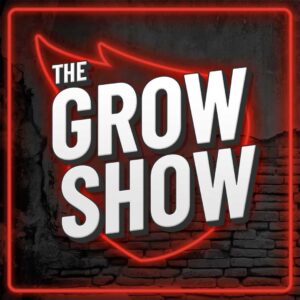Understanding search intent is essential for anyone in digital marketing, SEO, or content creation. It refers to the why behind a user’s search query, the purpose that drives what they type into a search engine.
When you understand what search intent is, you can anticipate what your audience truly wants and deliver content that meets them exactly where they are in the buying journey. Whether it’s educational blog posts, optimized landing pages, or product-driven copy, aligning your strategy with user intent ensures your content performs stronger and converts better.
This article breaks down the core concepts of search intent, explores its different types, and explains how it shapes visibility, engagement, and SEO success.
Contents
The Importance of Search Intent
Search intent isn’t just a marketing trend; it’s the foundation of effective search engine optimization. Every click, keyword, and piece of content has intent behind it. When your content satisfies that intent, you attract the right audience instead of just any audience.
For example, someone searching “how to improve B2B lead generation” is looking for actionable insights, not a sales pitch. But a user searching “B2B lead generation services near me” likely wants to find a provider right now. Understanding these distinctions allows you to meet users with content that solves their needs in real time.
When your strategy aligns with search intent, you’re more likely to see higher engagement rates, better conversion metrics, and stronger ROI on your marketing efforts.
Why Understanding Search Intent Matters
Knowing what your audience is really searching for helps you create content that connects, converts, and builds credibility. Here’s how understanding search intent directly impacts your marketing:
- Improves SEO rankings by targeting intent-driven keywords instead of just high-volume terms.
- Enhances user experience by delivering relevant, value-packed information that matches expectations.
- Increases conversions by aligning offers and CTAs with the user’s stage in the buyer journey.
Search Intent and SEO
Modern SEO isn’t just keywords, it’s context. Google and other search engines prioritize content that fulfills the user’s goal, not just matches the words they type.
For example, a search for “best marketing automation tools” signals research intent, while “buy HubSpot plan” indicates readiness to purchase. Google recognizes this and ranks pages that best satisfy each intent type.
Businesses that build content around what search intent is and how to address it gain a competitive advantage. They appear higher in search results, reduce bounce rates, and guide prospects smoothly from discovery to decision.
4 Types of Search Intent
Search intent generally falls into four main categories: informational, navigational, transactional, and commercial investigation. Each requires a different approach to content, messaging, and optimization.
Informational Intent
Users with informational intent are seeking knowledge, guidance, or answers. They’re not necessarily ready to buy yet, but they’re exploring, learning, or problem-solving.
Examples:
- “What is search intent?”
- “How to improve SEO for small businesses”
- “Why social media marketing matters for B2B brands”
Content Strategy:
Create educational and evergreen resources like blog posts, how-to guides, and explainer videos. Use visuals and examples to simplify complex ideas. For instance, a post titled “10 Proven Strategies to Boost Your SEO Rankings” helps users learn while positioning your brand as an expert.
Navigational Intent
Navigational intent occurs when users are looking for a specific brand, website, or page. They already know where they want to go; they just use Google as a shortcut.
Examples:
- “Abstrakt Marketing Group blog”
- “LinkedIn login”
- “HubSpot pricing page”
Content Strategy:
Optimize for branded search terms and ensure your site’s metadata and structure are accurate. Create clear navigation menus and internal links that make it easy for users to find what they need. This ensures your audience reaches your intended pages quickly and confidently.
Transactional Intent
Transactional intent shows that a user is ready to take action: make a purchase, schedule a consultation, or request a quote.
Examples:
- “Buy running shoes online”
- “Get B2B lead generation services”
- “Schedule a free marketing consultation”
Content Strategy:
For transactional intent, your goal is to remove friction. Use clear CTAs, strong value propositions, and social proof to drive conversions. Optimize your landing pages for speed, trust, and clarity. For example, a dedicated service page with a headline like “Partner With the Leading B2B Lead Generation Experts” speaks directly to intent.
Commercial Investigation
Users with commercial investigation intent are in the research phase; they’re comparing options before making a purchase. They’re highly valuable leads because they’re close to a decision.
Examples:
- “Best CRM software for small businesses”
- “Top B2B lead generation companies”
- “HubSpot vs Salesforce comparison”
Content Strategy:
Create detailed comparison guides, customer testimonials, and case studies. Showcase how your solutions outperform competitors. For instance, an article like “Abstrakt vs. Traditional Lead Generation: What’s the Difference?” can help users evaluate options while reinforcing your authority.
How to Optimize Content for Search Intent
Optimizing for search intent means tailoring every part of your digital strategy to align with user goals, from keywords to content format to conversion flow.
Keyword Research
Start by identifying the intent behind your target keywords. Use tools like Google Keyword Planner, Ahrefs, or SEMrush to analyze what people are searching for and how they phrase it. Look beyond volume; focus on the intent that drives each query.
Content Creation
Once you understand intent, structure your content to deliver what users expect.
- Informational: Long-form guides, how-to blogs, infographics.
- Navigational: Branded landing pages, press releases, or about pages.
- Transactional: Product or service pages, demos, and free trial offers.
- Commercial Investigation: Reviews, case studies, and comparison charts.
Utilize Structured Data
Structured data helps search engines understand your content and display it more effectively in results, often through rich snippets. For local businesses, schema markup can improve local SEO and make you more visible to nearby customers searching with intent phrases like “marketing firms near me.”
Measuring the Impact of Search Intent
To measure whether your content aligns with user intent, track metrics that indicate engagement and satisfaction:
- Organic traffic growth: Are more people finding you through search?
- Engagement metrics: Are users staying longer, scrolling deeper, or returning to your site?
- Conversion rates: Are those visitors taking meaningful actions, like signing up or scheduling a call?
Use Google Analytics, Search Console, and CRM data to understand how well your strategy fulfills intent and where you can refine it.
Wrapping Up
Understanding what search intent is and optimizing for it is essential to digital success. When your content reflects the user’s true goal, you create better experiences, improve visibility, and build trust that converts into long-term growth.
As search engines evolve, staying tuned into user intent will keep your brand competitive and relevant across every stage of the customer journey.
Maximize Your Search Intent Strategy with Abstrakt
Ready to align your marketing with what your audience truly wants?
Abstrakt specializes in helping businesses capture, convert, and retain qualified leads through SEO-driven strategies that connect with user intent. Our experts can help you build a content strategy that targets the right audience, improves search performance, and drives measurable results.
Learn more about how we can elevate your lead generation and SEO success today.

Madison Hendrix
Madison has worked in SEO and content writing at Abstrakt for over 5 years and has become a certified lead generation expert through her hours upon hours of research to identify the best possible strategies for companies to grow within our niche industry target audiences. An early adopter of AIO (A.I. Optimization) with many organic search accolades - she brings a unique level of expertise to Abstrakt providing helpful info to all of our core audiences.
- Madison Hendrix#molongui-disabled-link
- Madison Hendrix#molongui-disabled-link
- Madison Hendrix#molongui-disabled-link
- Madison Hendrix#molongui-disabled-link







